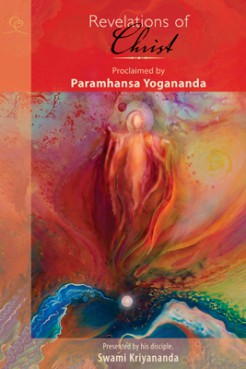
(RNS8-JULY03) Cover for “Revelations of Christ,” which explores Jesus’ teachings through the
lens of Eastern religions. For use with RNS-10-MINUTES, transmitted July 3, 2007. Religion
News Service photo courtesy Crystal Clarity publishers.
(RNS) This month’s National Geographic magazine cover story “The Polygamists” offers a rare look inside the Fundamentalist Church of Jesus Christ of Latter-Day Saints, a polygamous off-shoot of the mainstream Mormon Church.
The story wouldn’t have been the same without the access that photographer Stephanie Sinclair was granted after federal raids on an FLDS compound in Texas in 2008.
Sinclair talked about how she got involved with the project, the photography that stands out to her and gaining FLDS members’ trust. Answers have been edited for length and clarity.
Q: What brought you to the project?
A: I was working on an assignment for The New York Times Magazine, and I went to Texas when the raid happened (in April 2008). I went out to check out the situation in Texas and learn about the community.
Q: How did it transition to National Geographic?
A: I contacted National Geographic after the piece ran in The New York Times Magazine because I felt I had just scratched the surface on learning about the community, and really just felt like there was a lot more that we could learn.
Q: What inspired you along the way?
A: Lots of different things. I was kind of enthralled by the different things at stake in what is considered a legitimate religion — was polygamy a freedom of religion thing, (and) where is government’s role in that? I thought it would be interesting to take a deeper look at their lives and see what life was like for a family that practiced plural marriage.
Q: Is there one photo that stands out to you?
A: There were a couple that were pretty interesting. I was really moved by the funeral service I was able to attend (for Bishop Merril Jessop’s first wife, Foneta). That was pretty powerful. I had never seen that many people turn out to a funeral before, like 7,000 or 8,000 people. And he had many, many wives show up who were part of the funeral, as well. I think you see the heart of a community when you see the things that we all have in common — life, death, birth, marriages and things like that. It was good to see that from the inside, in front of you.
Q: What was it like spending more than a year with various members of the FLDS community?
A: It was on and off (for weeks at a time). I had to deal with their schedules. They had lots of court cases going on, and they were very serious about micro-managing time. Often I would go out to Texas or Utah and wait six, seven or 10 days before being able to take one picture because some of the members that were in charge of granting access were just too busy to look into my needs.
Q: How did you gain the trust of the community?
A: Honestly, I think a lot of access came from the fact that this was for National Geographic. It’s known as being an open and very fair publication. I think they recognized that this was a good opportunity for them to be treated fairly and to be able to show their lifestyle and have it be treated with respect.
Q: How did you maintain objectivity in your coverage?
A: My job was just to document what I saw. So, it was easier for me to be objective.
Q: Were there certain elements you wanted to capture in particular?
A: I really wanted to photograph some of their religious events to show that it was a community based in faith. These decisions to practice plural marriage were based in faith, whether or not you agreed with it. What I photographed kind of depended on how I saw things, but mainly I was just trying to be factual.
Q: What do you hope a reader or viewer takes away from your photographs in this piece?
A: I realize that this group has a lot of controversy around them — court cases going on, different things they’ve been accused of — but I really just want to provide a more factual foundation for that discussion. These photographs weren’t necessarily meant to answer questions about those specific things. But really to at least remember that we are dealing with human beings and families. And to have a little more knowledge when these discussions happen.




